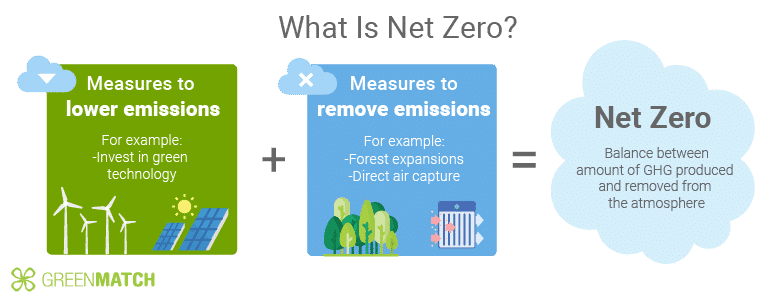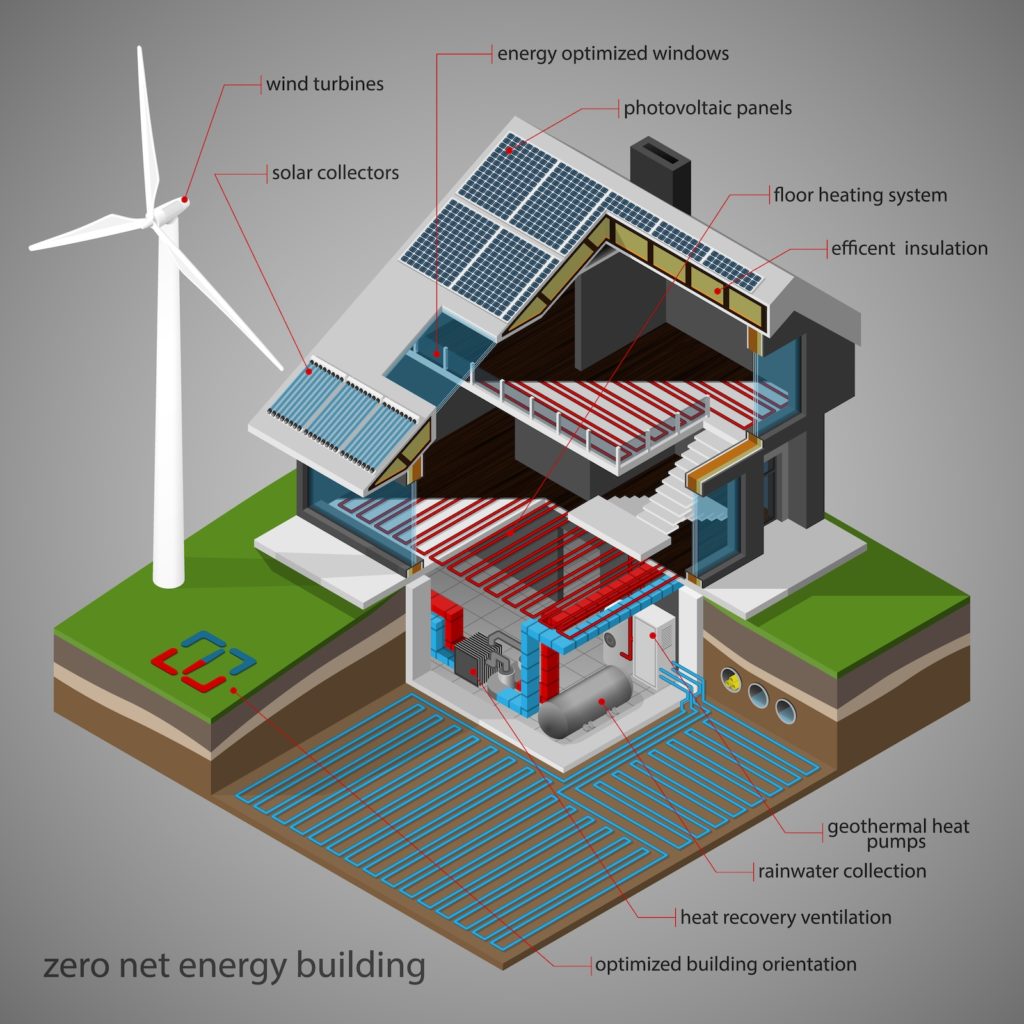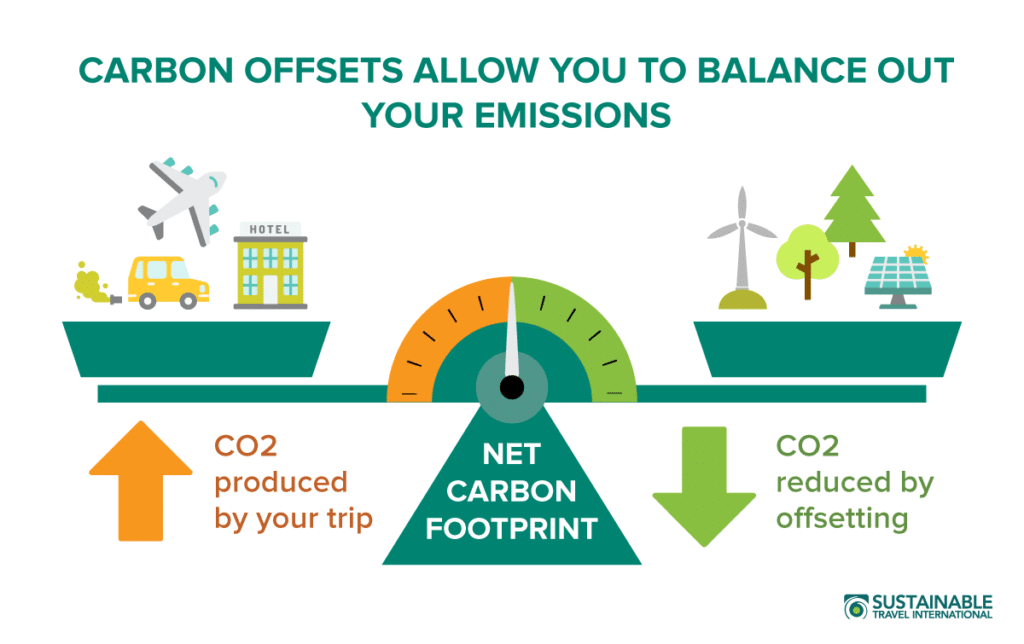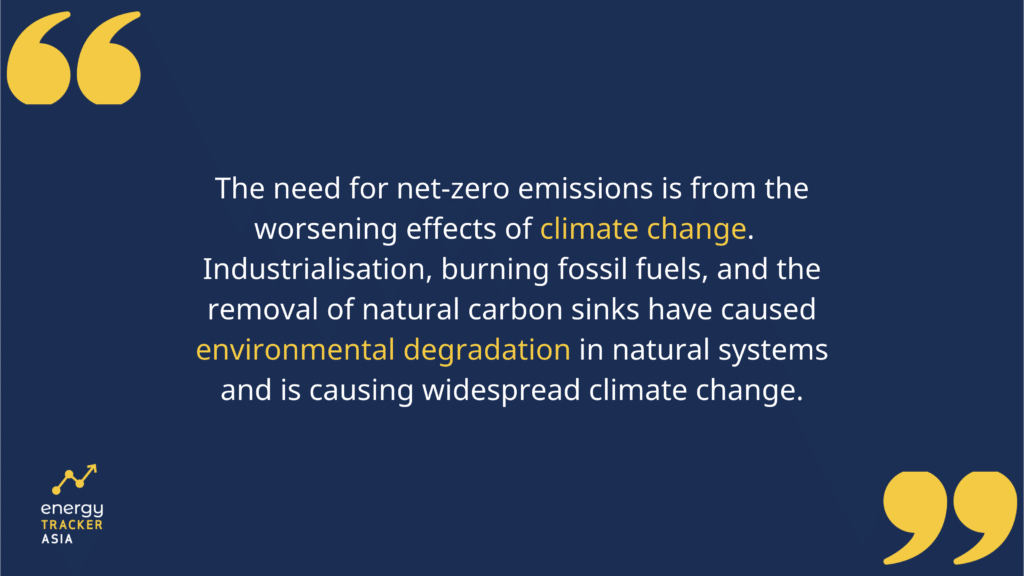Net-Zero by 2050: Humanity’s Best Bet Against Climate Change
J.P. Morgan
27 April 2022 – by Eric Koons Comments (0)
Net-zero goals are a cornerstone in the global strategy to mitigate climate change and reduce global emissions. Countries, cities and companies are adopting climate pledges to assist global efforts. This includes ambitious net-zero targets across all industrial sectors – including the energy sector in which fossil fuels have historically dominated. Together, these pledges will be a significant factor in reaching net-zero to limit the impacts of climate change.
What Is Net-Zero – Definition?
When discussing net-zero goals, policymakers refer to a system that produces the quantity of greenhouse gases equal to or less than the quantity of gases removed from the atmosphere. For example, this could be an organisation that plants enough trees per year to counter the carbon emissions it creates.
What Does It Mean to Go Net-Zero?
Going net-zero means achieving a balance in both produced and captured greenhouse gases. In the short term, it means removing carbon dioxide from the Earth’s atmosphere while finding low-carbon alternatives.
The push to achieve net-zero emissions has gained popularity due to several reports highlighting global governments’ slow action to reduce their carbon and GHG emissions. Committing to an economy-wide transition towards low-carbon solutions helps to ensure that a rapid response for removing carbon from the atmosphere is underway. We must reach net-zero by 2050 in order to meet the global net-zero target of limiting warming to 1.5°C by 2100. It requires bold climate action to limit global warming.
What Is Net-Zero for a Company?
For companies, net-zero involves decarbonising their operations as best as they can. This means creating more efficient and sustainable products or services and exploring low-carbon alternatives throughout their supply chains.
What Is a Net-Zero Strategy?
A net-zero strategy refers to the plan put in place to decarbonise a specific activity. It considers current greenhouse emissions, opportunities to reduce them, the timeline to achieve a reachable goal and its pathway.
The Goal of Reducing Greenhouse Gas Emissions and Carbon Dioxide Emissions to Fight Global Warming
For governments, this involves working with stakeholders across all sectors of the economy (public, private, NGOs and academic) to collaborate on a workable solution toward net-zero. In some instances, partnerships between these sectors can help further reduce greenhouse gas emissions or lead to innovative governance and policies. To be successful, a net-zero strategy must consider every industry and the impacts that the shift could cause. In some cases, it may come to the detriment of one industry but boost another. Or, it may open new opportunities for an entirely new sector. A holistic and comprehensive net-zero strategy would incorporate and identify the issues, solutions and alternatives available.

Net-Zero Emissions

The need for net-zero emissions has come due to the worsening effects of climate change. The high amounts of greenhouse gases in the atmosphere exacerbate the planet’s natural environmental cycles. These continually increasing global emissions levels lead to compounding consequences. Before industrialisation, the global environment had enough carbon sinks, or areas that would capture carbon dioxide emissions, to balance its natural production of greenhouse gases. This balance ensured that the environment and global temperatures remained stable.
However, due to the onset of industrialisation, the burning of fossil fuels and the removal of natural carbon sinks, greenhouse gases have increased. This is causing environmental degradation in natural systems and leading to widespread climate change. As a result, global governments are working together to limit warming and reach net-zero carbon emissions. The transportation and energy sectors are the main targets for these policies because they account for a majority of carbon emissions. However, this change is happening in every aspect of the economy.
Learn more about net-zero emissions in our article Net-Zero Emissions: Cutting Generation and Increasing Offsets.
Net-Zero Energy Buildings

An opportunity that has become available for many organisations is net-zero energy buildings. These buildings produce as much energy as they use in a year and tie in multiple innovative ways of achieving net-zero emissions balance. These buildings run efficiently in many ways – from having their own energy production through solar or wind to having less energy-intensive cooling systems and more effective insulation.
Aided by changes in planning codes and standards that create new developments with sustainability in mind, these net-zero buildings can seamlessly replace the current status quo in construction. In addition, energy efficiency for large businesses can lead to more savings and reduced overhead costs, which is good for the global economy. This makes the decision to pursue net-zero emissions both a sound environmental and economic decision.
Want more information about net-zero buildings, check out this article Net-Zero Energy Buildings: A Stepping Stone to Decarbonisation.
Carbon Neutral vs Net-Zero
Carbon neutral is the ability to balance out carbon emissions, while net-zero focuses on greenhouse gases as a whole. Net-zero aims toward becoming carbon-negative over time. Current systems should absorb more gas than they produce and actively mitigate climate change.
Get more information about carbon neutral and net-zero in this article Carbon Neutral vs Net Zero: What’s the Difference?
Carbon Neutral vs Carbon Free
There is still a certain degree of carbon production in a carbon-neutral system. However, operations are in place to absorb an equal amount of carbon to achieve carbon neutrality. A good example of this is taking a flight, which produces a large number of carbon emissions. If the airline purchases carbon offsets through a forestry programme and the programme plant a certain number of trees that eventually absorb the flight’s carbon footprint, the result would be carbon neutral. A carbon-free model would have the flight itself produce little-to-no emissions by using renewable energy.

The main difference between carbon-neutral and carbon-free is the mentality behind it. One supports a “business as usual” approach where carbon is negated after emissions. The other seeks to remove carbon before the emissions occur. In a carbon-free approach, supply chains and manufacturing are also considered, and operations are streamlined to reduce any opportunity for emissions. Optimisation would not necessarily occur in a carbon-neutral approach, as the carbon is likely to be offset. This may be an oversimplification and is not necessarily true.
Get our deep dive on this topic here Carbon Neutral vs Carbon Free: What’s The Difference?
Net-Zero In Asia
As countries move forward with their net-zero targets, all eyes are on the Asia-Pacific region, where developing economies are especially present. China and India have both announced net-zero plans that would see them complete their goals by 2070. Simultaneously, energy demand across the wider Southeast Asian region is increasing and creating uncertainty because renewables are not widely available and natural gas and coal are cheaper and more accessible. Asia certainly has the opportunity to lead by example and find innovative solutions to decarbonise rapidly. With climate change already having severe effects in the region, the motivation to do so will only increase.
Want to learn more about net-zero in Asia, check out Asia’s Race to Net-Zero by 2030.
Is Net-Zero Possible?
Net-zero by 2050 is a goal backed by science, and research shows that it is possible. Nevertheless, that does not mean it will be easy. It requires significant changes to our current energy systems. It would take a concerted effort from countries and continued collaboration across industries.
To achieve net-zero emissions by 2050, serious action needs to be taken now. The global transition towards low carbon was already off track many decades ago. Now, we need ambitious policies and pledges to help shift the trend. Infrastructure needs to be built, economies need to be overhauled, and supply chains and industries that have not been changed in decades must be optimised. Net-zero is an ambitious goal, and it requires collaboration and strong action.

by Eric Koons
Eric is a passionate environmental advocate that believes renewable energy is a key piece in meeting the world’s growing energy demands. He received an environmental science degree from the University of California and has worked to promote environmentally and socially sustainable practices since. Eric’s expertise extends across the environmental field, yet he maintains a strong focus on renewable energy. His work has been featured by leading environmental organizations, such as World Resources Institute and Hitachi ABB Power Grids.
Read more


